One of Japan’s best hikes: Mt. Shirouma-dake
Of the many fantastic hikes that showcase this area's landscapes, one of the most captivating belongs to Mount Shirouma-dake. Mt. Shirouma, standing at 2932 meters, and right in the middle of Japan's deep snow country, is one of the few peaks in Japan that feature large year-round snow fields, in addition to boasting some of the best views of the Northern Alps.
Like many of the other highest peaks in Japan, Mt. Shirouma also hosts a handful of well-located and fully-provisioned mountain lodges, making it possible to do multi-day hikes without the need to carry tents.
And with these things in mind, I started off on a two-day hike to reach the summit of Mt. Shirouma and its two stunning neighbors, Mt. Shakushi-dake and Mt. Hakuba Yarigatake.
Day 1: Hakuba to Mt. Shirouma Summit
From the center of town, the trailhead is located beside the Sarukuraso Lodge (1250 meters above sea level), about a 30-minute bus or car ride (regular daily buses run to/from JR Hakuba Station in season).
Upon arriving, it's wise to register your hiking itinerary on the forms provided for hikers so that authorities can more easily find you in case of trouble.
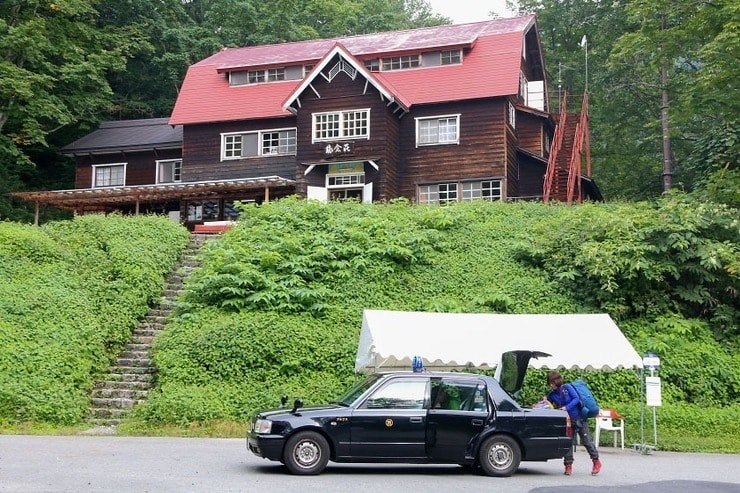
Sarukuraso Lodge, where it all begins
The first hour of hiking on the trail was pretty mild. The trail starts gently, leading through a patch of forest before joining a gravel path that eventually runs across several mountain streams.
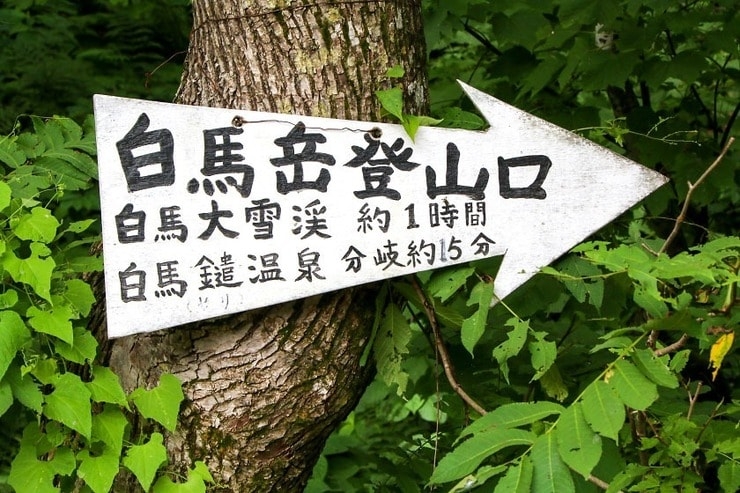
The trailhead marker sign at Sarukuraso Lodge
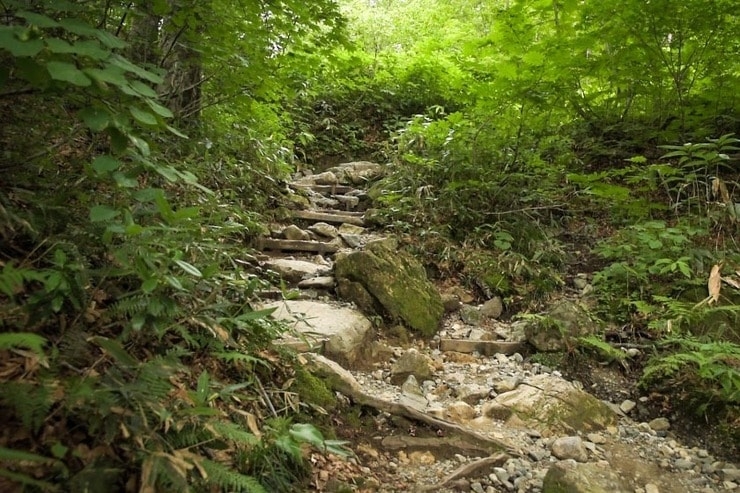
The start of the trail: not bad so far
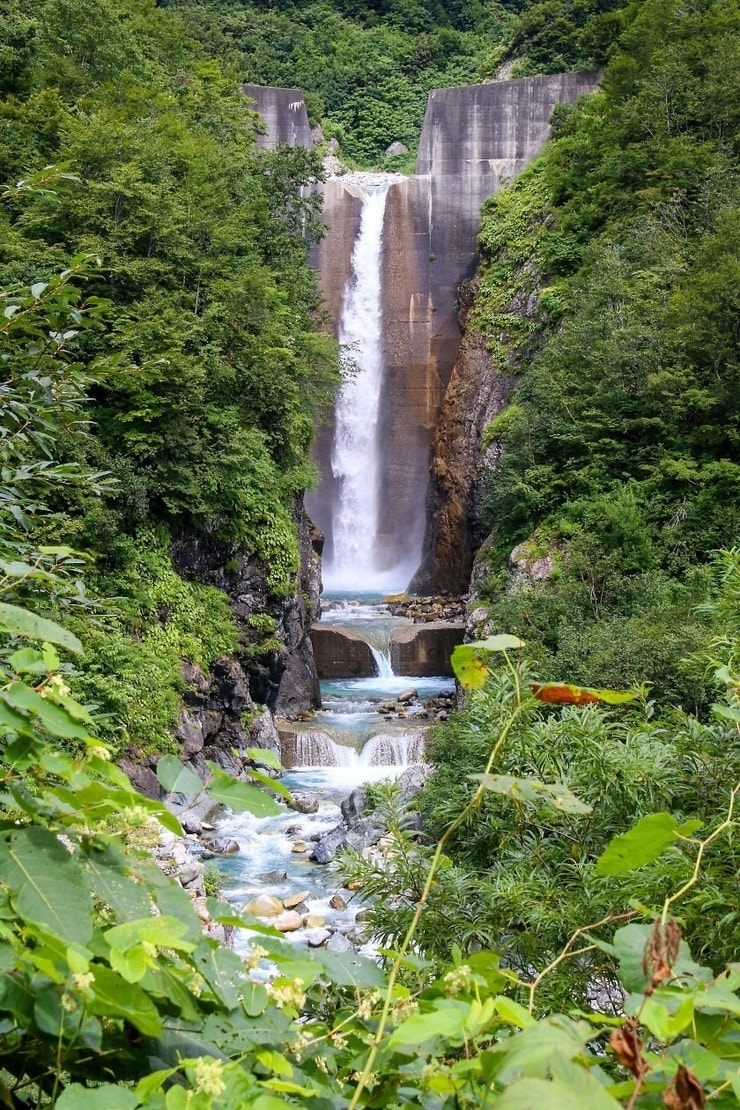
A hard-to-miss, but kind of pretty river management project
And that otherwordly landscape was my path to the summit.
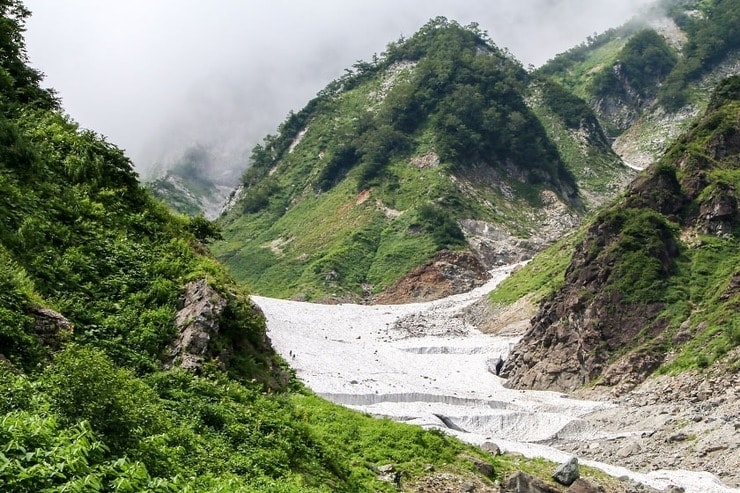
The snowy Daisekkei pouring down the valley from the cloudy overworld
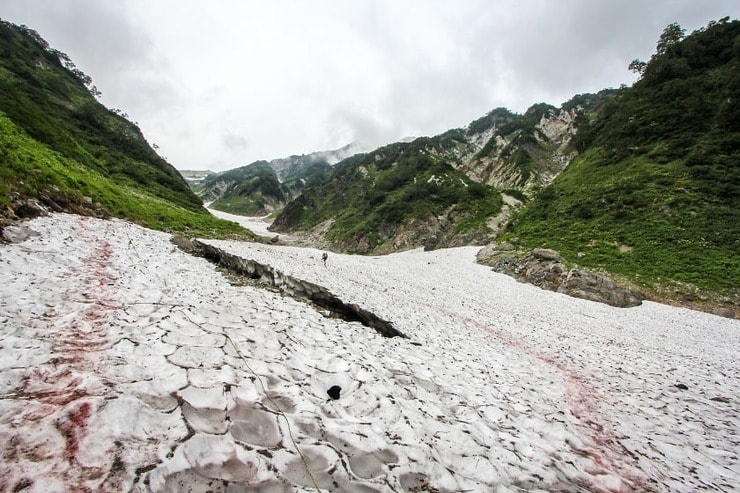
Safe routes on the snow are marked in relatively bright colors to help avoid crevaces, weak snow and falling rock spots
The hut also sells light 4-point crampons for 1000 yen that can be strapped to hiking boots for a less slippery ascent on the slick snow. While those with confident footing and sturdy boots may find them unnecessary, I found that they made my movement pretty efficient.
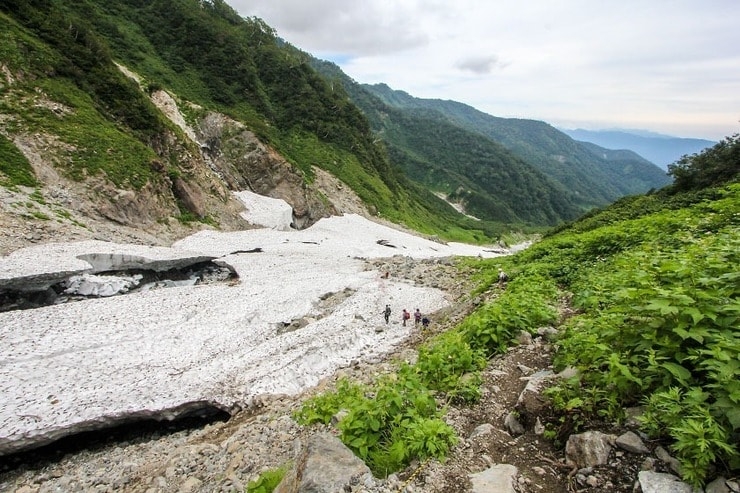
Hikers traversing the Daisekkei

Snow pouring down the bright green valley walls
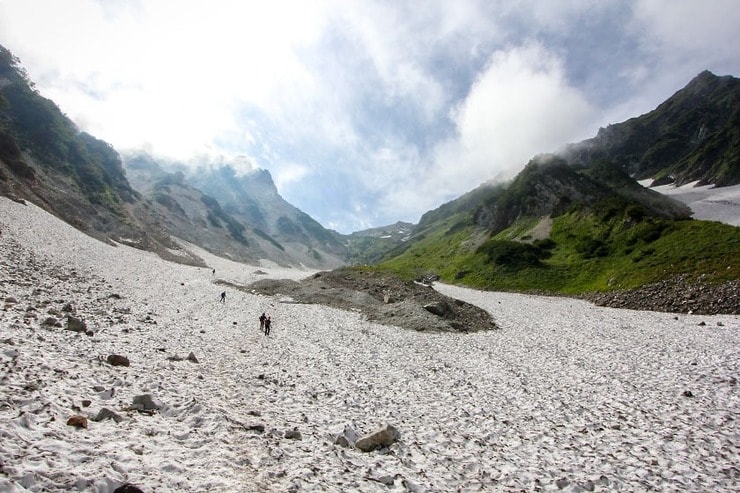
Gateway to heaven
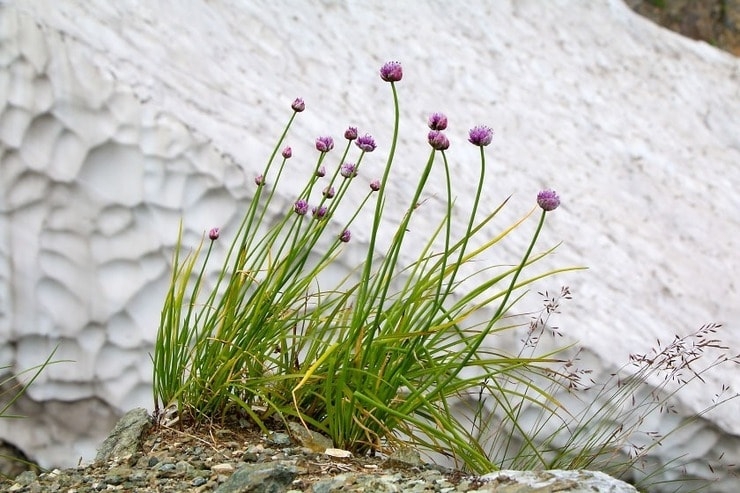
One of the best parts of hiking in the North Alps: beautiful alpine wildflowers all over the mountainsides (especially from July through early August)
After another 1–2 hours from the top of the Daisekkei, I finally found myself standing on the narrow ridgeline of the Hakuba mountain range itself. And not a moment too soon: I made it just in time to take in the incredible views of the neighboring peaks before the clouds collecting in the valleys swallowed them up.
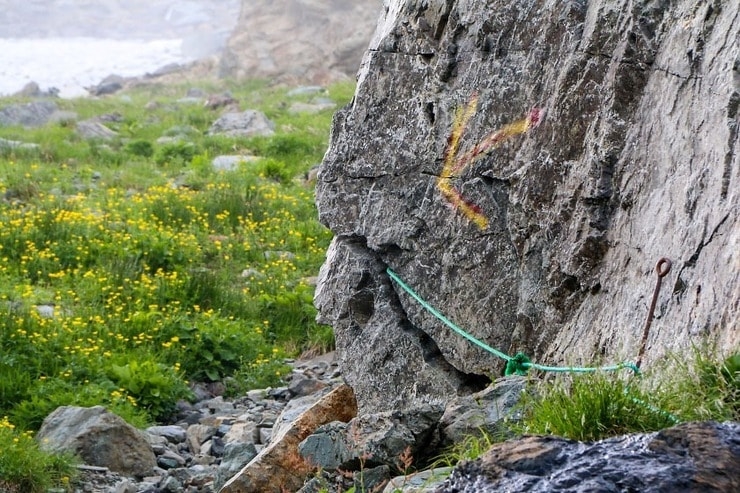
The well-marked trail leading through a patch of wildflowers
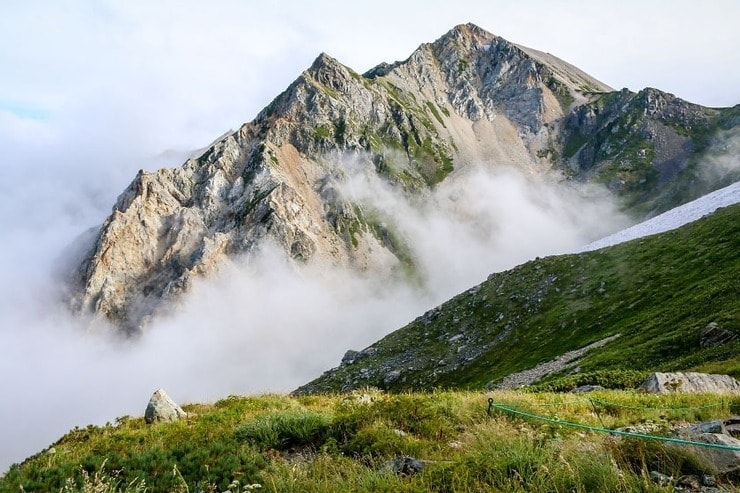
My first glimpse of the mountaintops from above the clouds
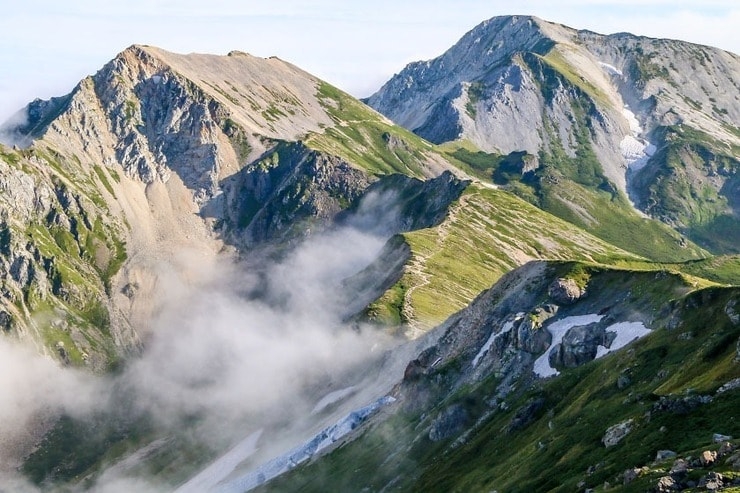
The peaks of Shakushi-dake (left) and Hakuba Yarigatake (right) and the craggy ridgeline
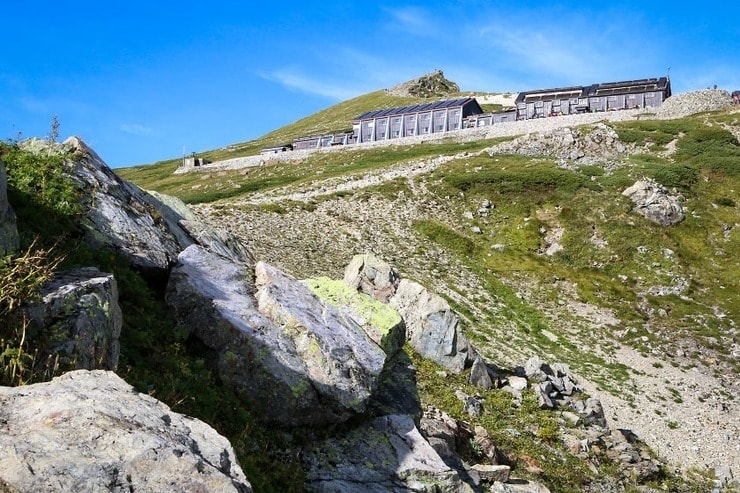
Hakuba Sanso Lodge and the summit of Mt. Shirouma just above it
Mountain huts like Hakuba Sanso, where I stayed that night, are a great feature of mountain hiking in Japan. Guests can normally request a hot meal (dinner, breakfast, or both—and sometimes even a to-go bento for the next day) and are provided with a futon and warm blankets, usually in a dormitory-style room. Prices range from around 7500-12,000 yen/night with meals (4000-8000 without), and most places also provide drinking water, toilets, and sell other provisions (usually including alcoholic beverages, for those interested).
Advance reservations are always a good idea (especially on weekends or holidays during peak hiking season), but are not always necessary as long as space is available.
After checking in and enjoying a lovely meal, I scurried outside and up the remaining 100 meters to the summit itself to try and catch the sunset. Sadly, clouds rolled in just before I reached the top, obscuring the scenery below, but I enjoyed my sense of accomplishment nonetheless and trundled back down to the lodge to relax and get some sleep for the big day ahead.
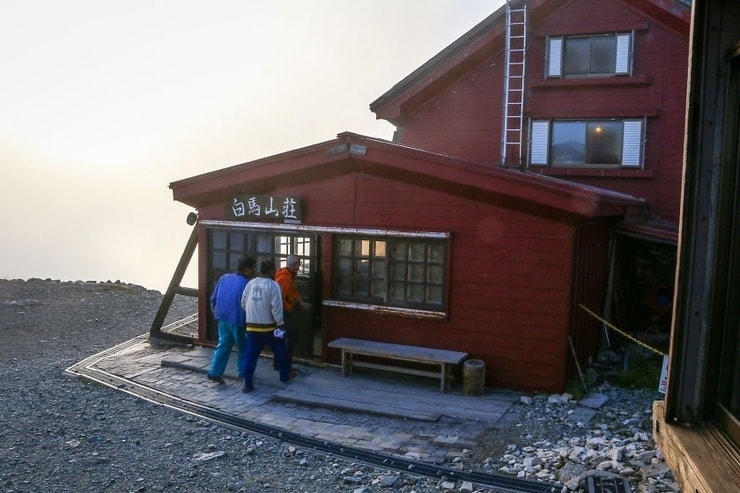
Hikers heading inside to eat dinner before sunset
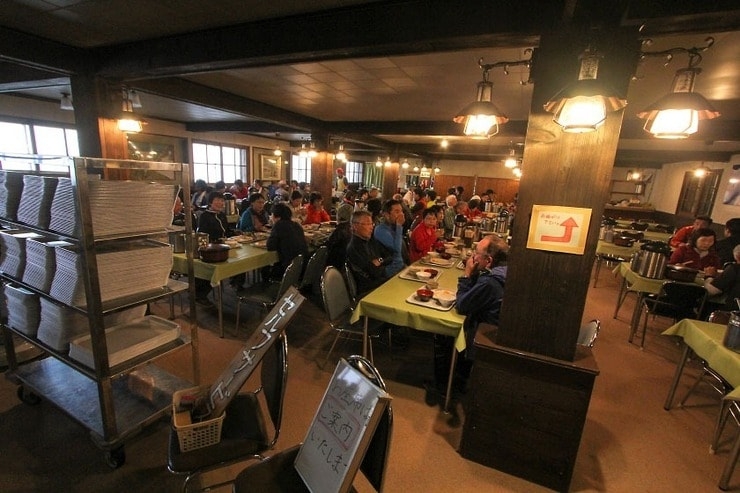
The mess hall: a great place to chat up other hikers and exchange stories
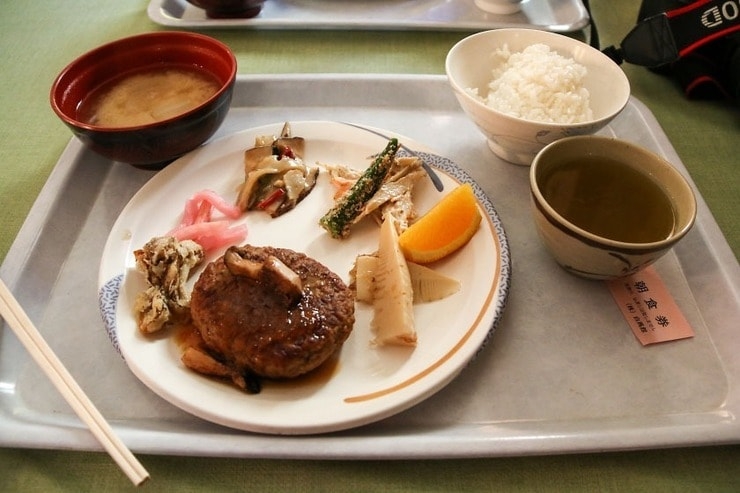
My delicious dinner: hamburger with locally-sourced mushrooms and veggies, a hot bowl of miso soup and rice
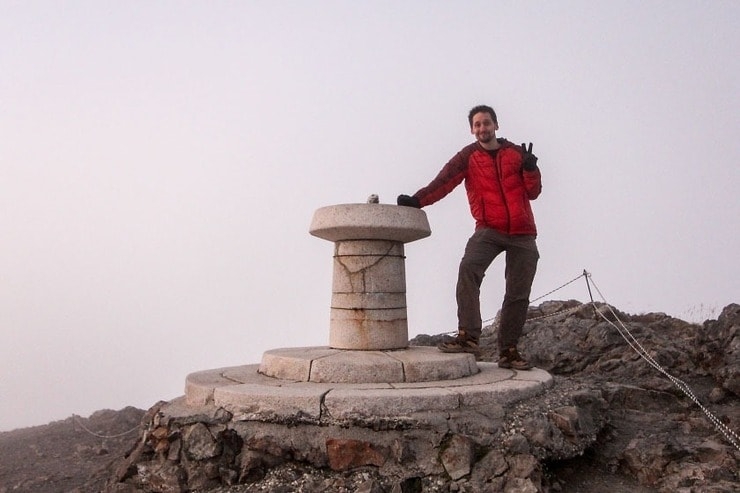
Made it! Your author standing at the summit of Shirouma-dake (2932 meters)
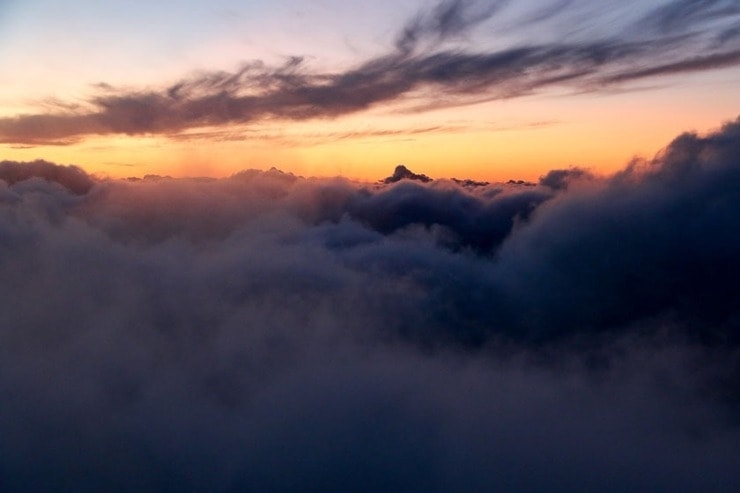
Mountaintop dusk
Day 2: Hakuba Yarigatake and Yari Onsen
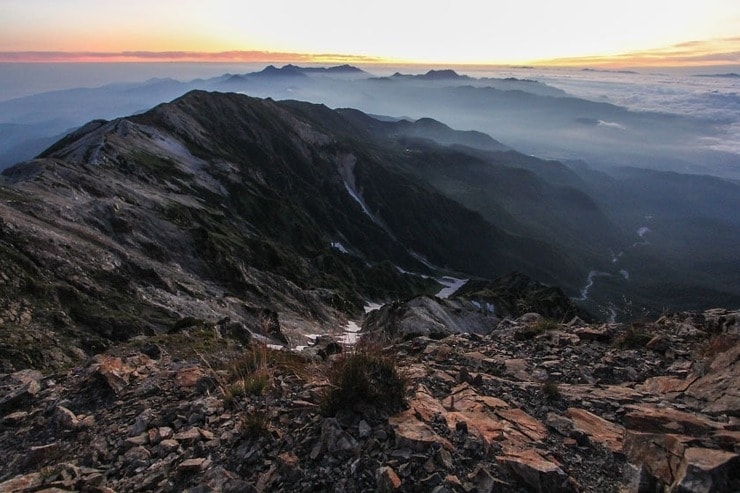
Pre-dawn view from the summit of Mt. Shirouma
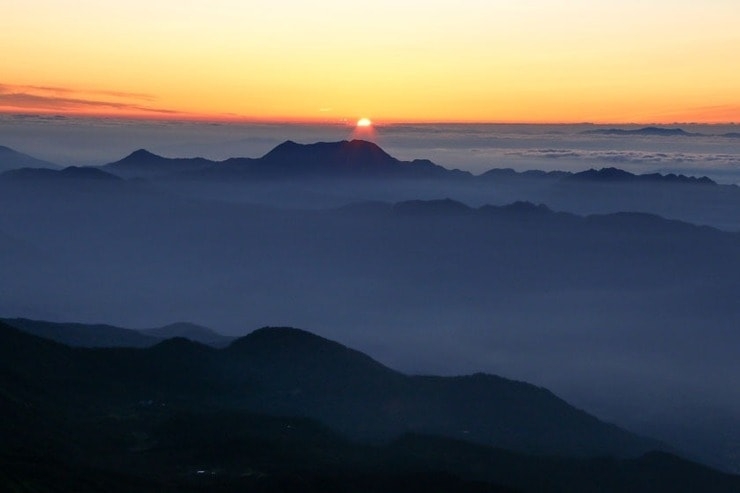
Sunrise above the clouds
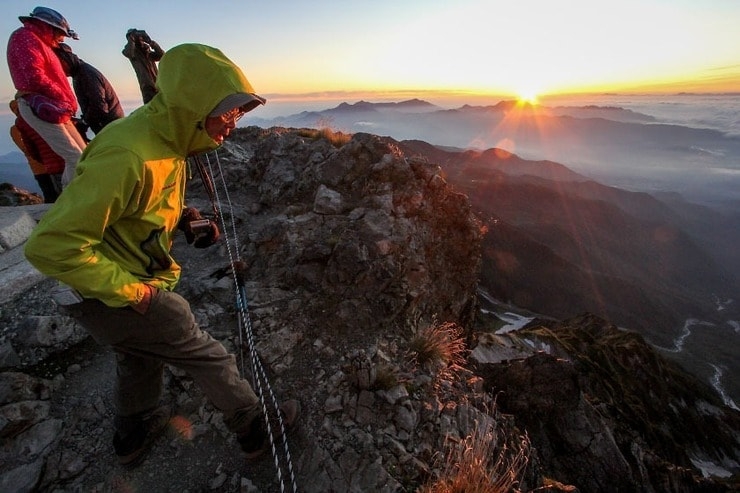
Sharing the sunrise with other excited hikers: priceless

The view over all of the Northern Japanese Alps
Blessed with beautiful sunny weather, I took a leisurely pace to simply soak in the incredible scenery around me. The trail was simply set on top of the ridge itself, following the bumpy contours of the mountains. And about an hour after leaving the lodge, I was at the top of Shakushi-dake (2812 meters), halfway to today's high point, Yarigatake.
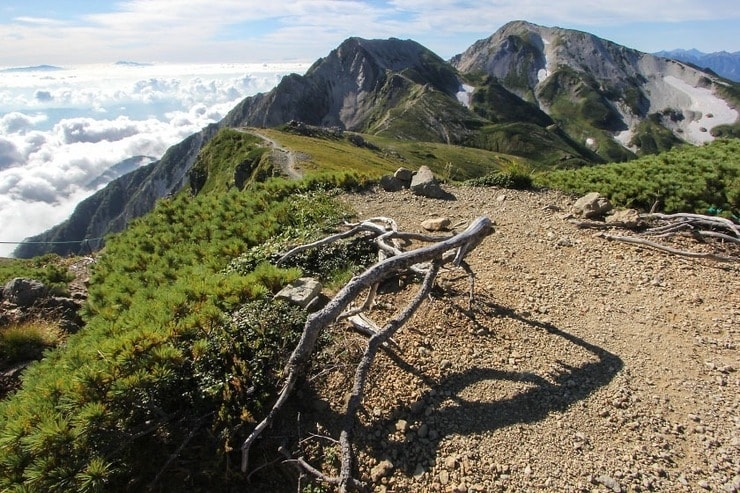
The path winding its way along the ridge to Shakushi-dake (left) and Yarigatake (right)
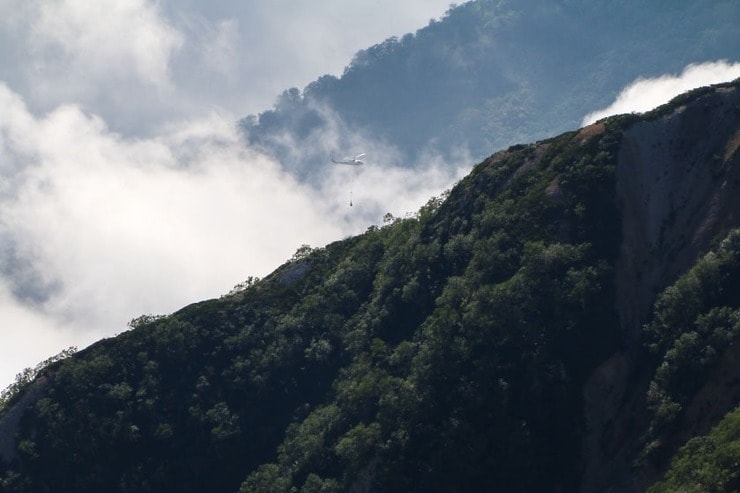
Spotted a helicopter carrying supplies up to the mountain huts
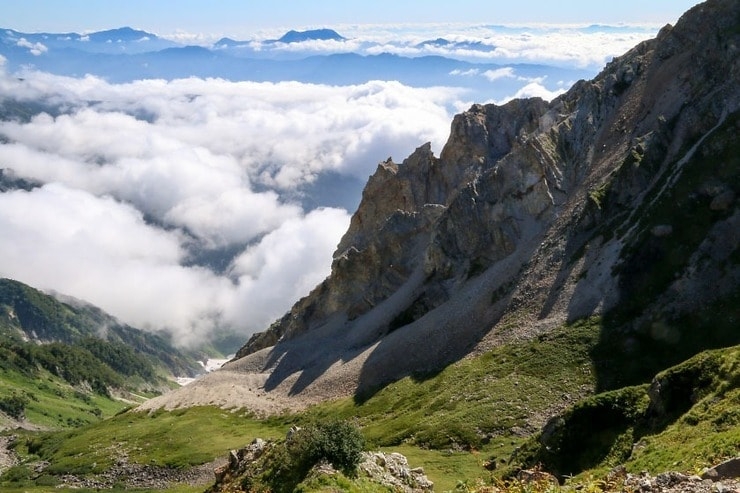
I think I'll make my next hike a week-long one
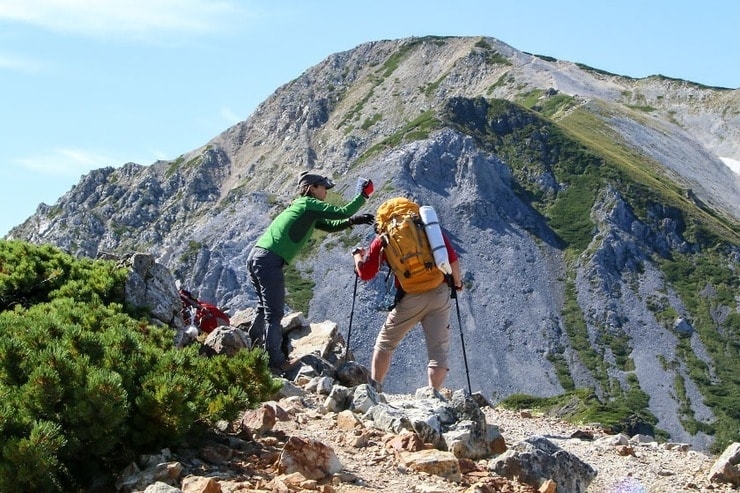
Fellow hikers adjusting their packs as Yarigatake looms in the distance
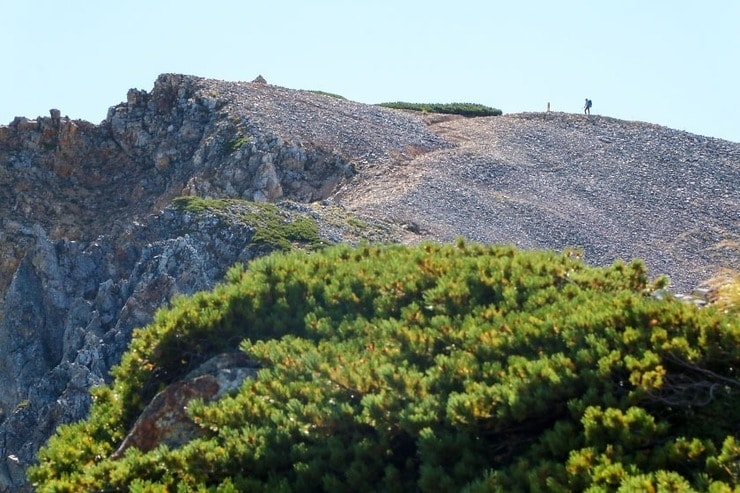
A hiker taking the last steps to the rocky summit of Shakushi-dake
With a tight schedule to keep, I stayed long enough to snap some pictures and eat a snack, and then began the long descent back to the trailhead.
While many people opt to return the way they came via the Daisekkei, or continue south along the ridgeline to the other peaks of the Hakuba range, I decided to descend via the slopes of Yarigatake. The path offers more lovely scenery and snow fields, but also a rare feature at an elevation this high: an onsen!
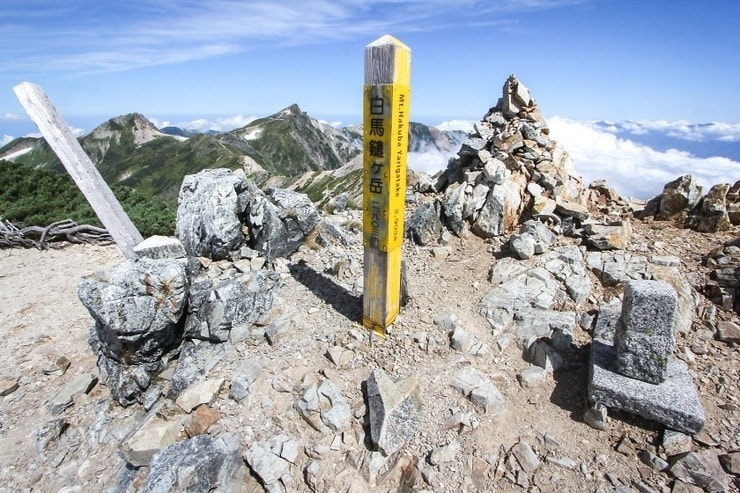
At the summit of Hakuba Yarigatake
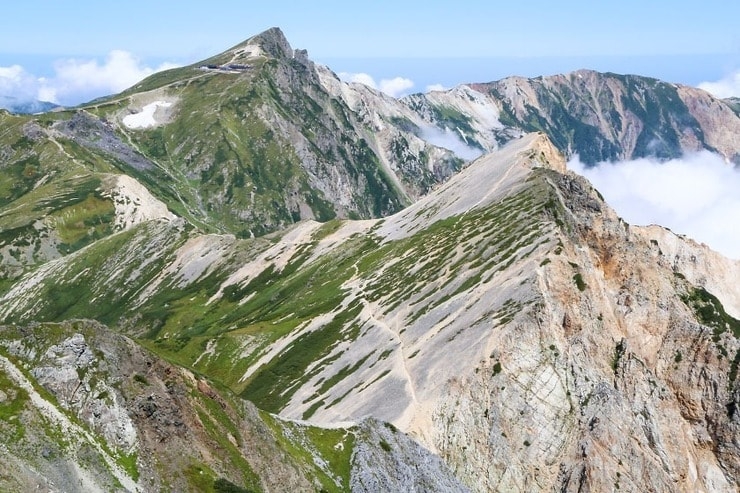
Shirouma-dake (left) and Shakushi-dake (right) from atop Hakuba Yarigatake
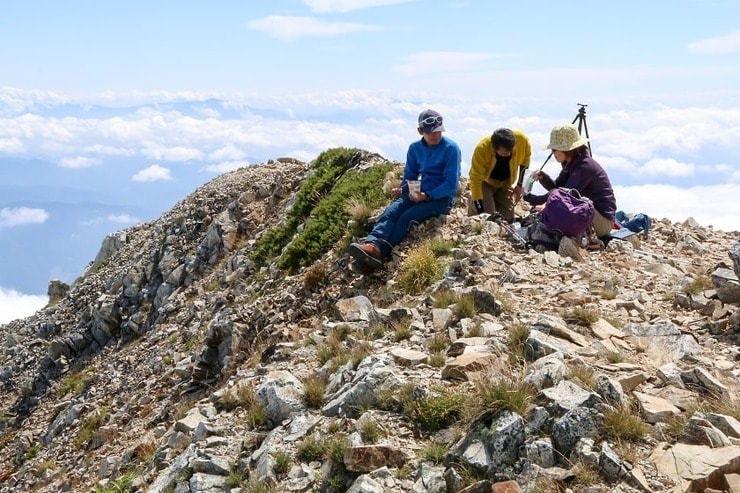
Summit snack
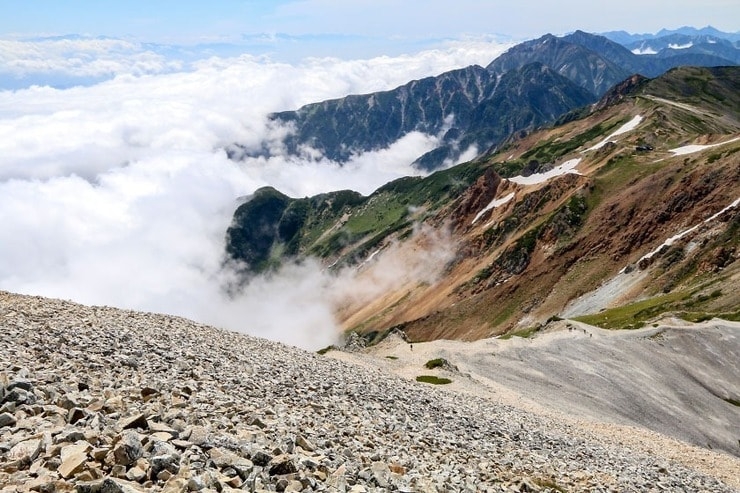
The descent

No rush
Of course I couldn't pass up the opportunity and enjoyed the chance to relax in the bath for as long as I could. But to make sure I made it down before dark, I was off, allowing for about 2-3 hours (or longer) to descend all the way back to the Sarukura Lodge at the trailhead.
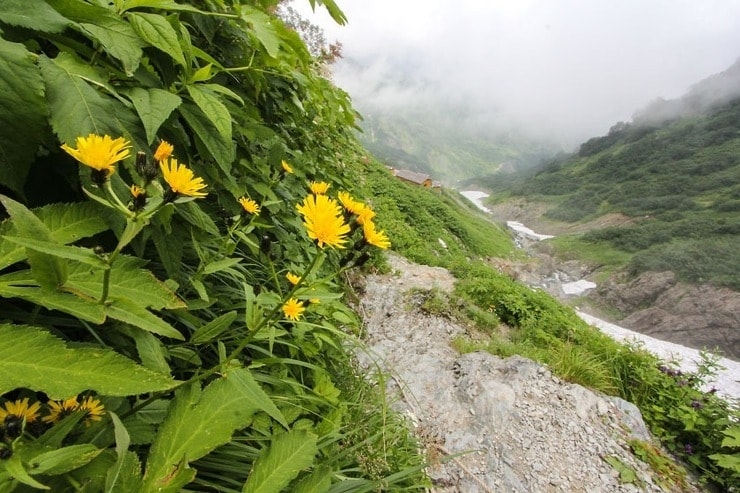
The Hakuba Yari Onsen Lodge alongside a snow field
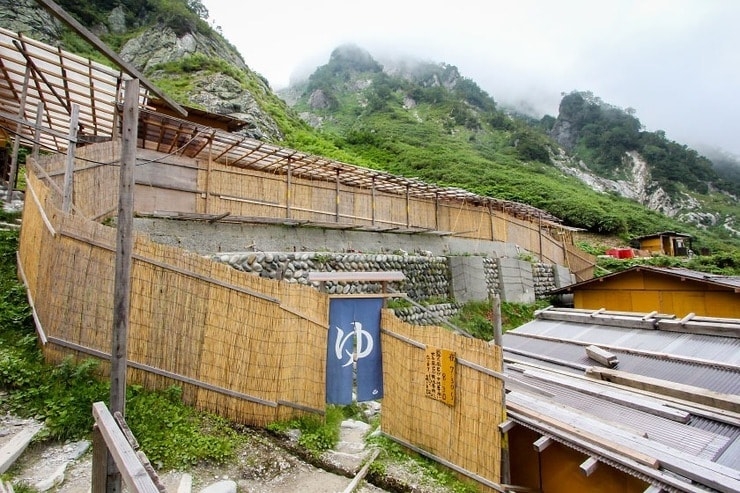
The entrance to the men's bath at Yari Onsen
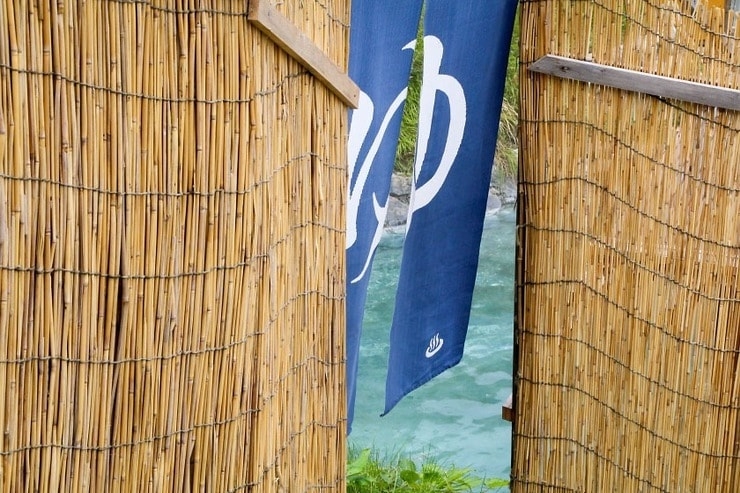
So very satisfying
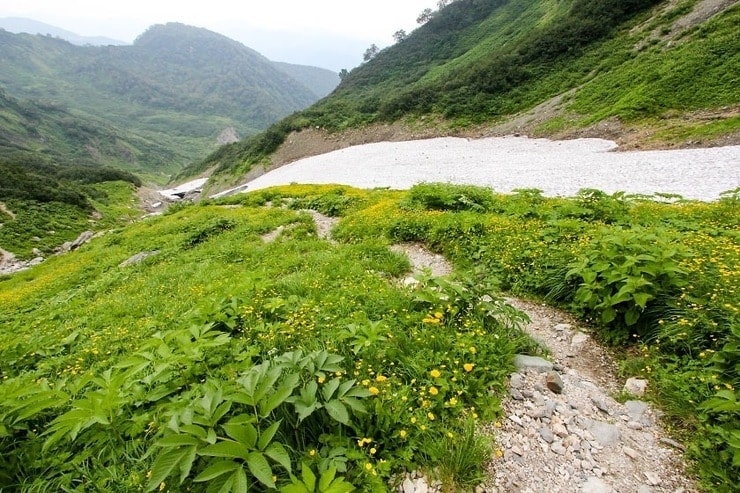
The trail below Yari Onsen
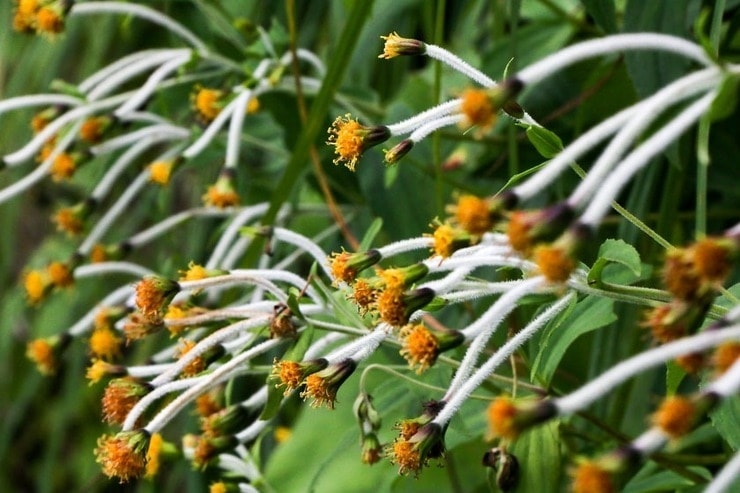
Some wild wildflowers along the path
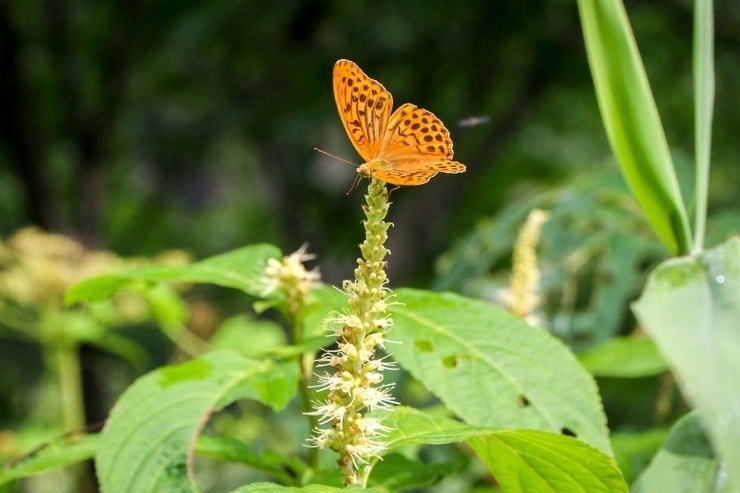
So much beauty to take in
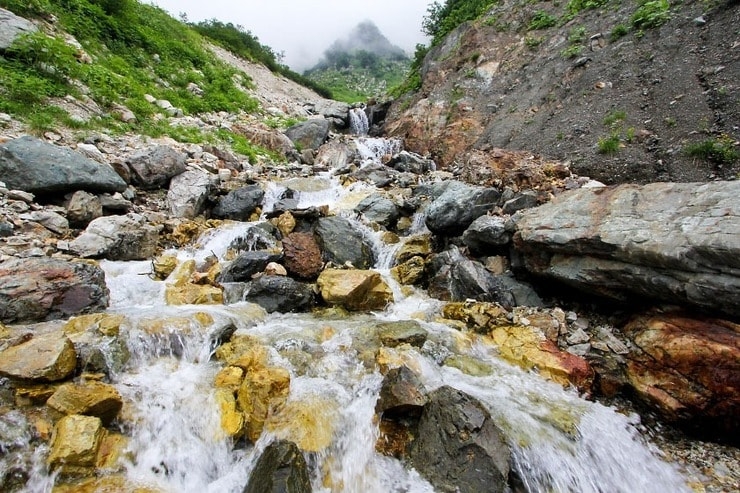
One of many gorgeous streams tumbling down the mountains
This hike can be done safely any time during the main hiking season between July and October. While many of the mountain huts are open as early as April, large amounts of snow linger into spring, and heavy rains in June and early July can cause dangerous conditions, so take extra care for avalanches and rock slides. Hiking between mid-November and early April will mean full winter conditions, so only attempt it with proper mountaineering gear and training.
